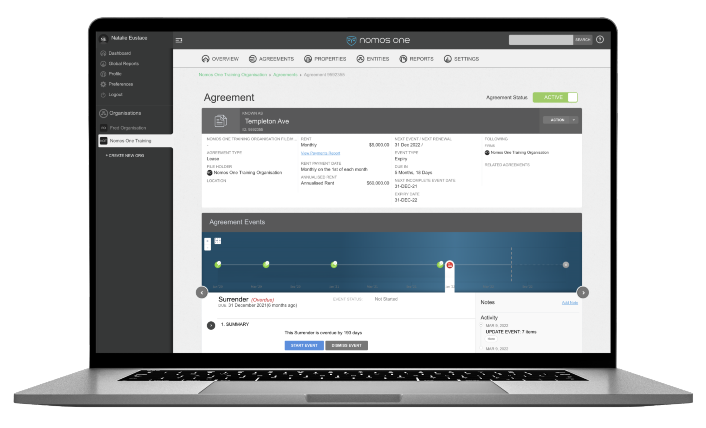In today’s aviation industry, where margins are tight, assets are mobile, and regulatory scrutiny is rising, efficient lease management poses a strategic necessity. Whether you're managing aircraft leases, terminal concessions, maintenance facilities, or equipment contracts, the tools used to oversee and account for those agreements can make a measurable difference to financial transparency, operational efficiency, and risk exposure of your company. For aviation CFOs, finance teams, and operational leaders, selecting the right lease management system is a pivotal decision, especially in an IFRS 16 environment where accuracy, auditability, and integration are essential.
However, not all lease management software is built the same. Many platforms claim to support lease tracking, yet fall short when it comes to the specific complexities of aviation. This article explores what aviation businesses should look for in a lease management solution, what red flags to avoid, and how a system like Nomos One is built to meet aviation's unique needs.

Must-have features for aviation lease administration
The aviation industry operates at the intersection of complexity and compliance. Any lease management system you choose must not only simplify workflows but also satisfy international accounting standards. At the top of the list is built-in IFRS 16 capability. With aviation leases often spanning decades and structured with variable payments, escalation clauses, and complex termination options, manual calculation of right-of-use assets and lease liabilities introduces significant room for error. A reliable system should help automate these calculations, manage modifications mid-term, and produce compliant journal entries that integrate cleanly into your general ledger.
Beyond accounting, reporting flexibility is another essential feature. Aviation businesses typically manage leases across multiple geographies, asset classes, and departments. A strong lease management system should allow users to generate reports filtered by location, lease type, contract status, or financial impact, offering decision-makers the clarity needed to manage risk and optimise asset use.
Audit trails and data integrity are also key. Aviation leases are high-value agreements that undergo regular scrutiny from both internal stakeholders and external auditors. The ability to maintain a time-stamped, tamper-proof history of every lease-related action - be it a data entry, journal posting, or contractual amendment - is critical to establishing trust, transparency and accuracy.
Finally, cloud-based access is no longer optional. With teams often distributed across airports, head offices, and regional facilities, secure and centralised access to lease information ensures consistency, collaboration, and real-time updates. A web-based system also enables fast deployment and reduces the need for costly on-premise infrastructure.

Red flags to avoid when evaluating solutions
While evaluating potential lease management platforms, it’s just as important to recognise signs that a system may not be fit for purpose, especially in aviation. One major warning sign is reliance on spreadsheets or manual workarounds. While spreadsheets may seem flexible, they are prone to versioning errors, formula inconsistencies, and lack the audit controls required for regulatory compliance. In aviation, where lease values can run into the tens or hundreds of millions, one incorrect assumption or overwritten cell can result in material misstatements on your balance sheet. A second red flag is lack of centralisation capabilities. Your lease management system should not operate in isolation. A platform that cannot provide access to stakeholders effectively forces double handling, increases the risk of data inconsistencies, and slows down processes at scale. Equally important is the level of ongoing support and product maturity. Aviation lease management is too critical to entrust to underdeveloped systems or vendors with limited experience in regulated industries. Ensure the provider you choose offers robust onboarding, responsive support, and regular product updates based on user feedback and regulatory developments.
Why industry-tested solutions deliver greater confidence
In a high-stakes industry like aviation, credibility matters. Systems that are already trusted by auditors and chartered accountants, and tested in regulated industries, offer a significant advantage. These platforms bring built-in best practices, a deeper understanding of industry requirements, and a proven ability to satisfy rigorous reporting and audit standards. Nomos One, for instance, has been specifically designed to serve businesses with complex lease portfolios, across aviation, infrastructure, utilities, and beyond. Its IFRS 16 modules have been robustly tested and validated by finance professionals, helping ensure compliance not just in theory, but in real-world audits. The platform also supports asset classes beyond aircraft, including terminal-side leases, easements, hangars, and ground service equipment, enabling aviation businesses manage all their agreements in one place. From representing complex leasing arrangements and milestone tracking to renewal alerts and flexible reporting tools, Nomos One provides aviation companies with the structure, transparency, and confidence they need to manage leases strategically, not just administratively.

Nomos One is built to fit naturally into the aviation business environment, with tools tailored to the needs of finance, legal, and operations teams. The platform supports multi-user collaboration, so finance controllers, legal counsel, and property managers can work from a shared source of truth. Its cloud-native architecture ensures secure access from any location, while role-based permissions safeguard sensitive information. The system is also highly adaptable. Custom fields allow you to capture aviation-specific data, such as gate usage, terminal fees, or co-use clauses, while automated notifications and workflows help teams stay on top of lease milestones and obligations. Combined with a user-friendly interface and robust onboarding support, Nomos One helps ensure that your team not only complies with IFRS 16 but also gains operational efficiency and strategic visibility across the lease lifecycle.
Choosing a lease management system is more than a procurement decision. It is an opportunity to reshape how your organisation handles one of its most significant financial commitments. With the right platform in place, aviation companies can turn lease management from a fragmented task into a streamlined, insight-driven process. Compare Nomos One against your current approach and see how much more efficient lease management in aviation can be. Book a demo today to take the first step!

























